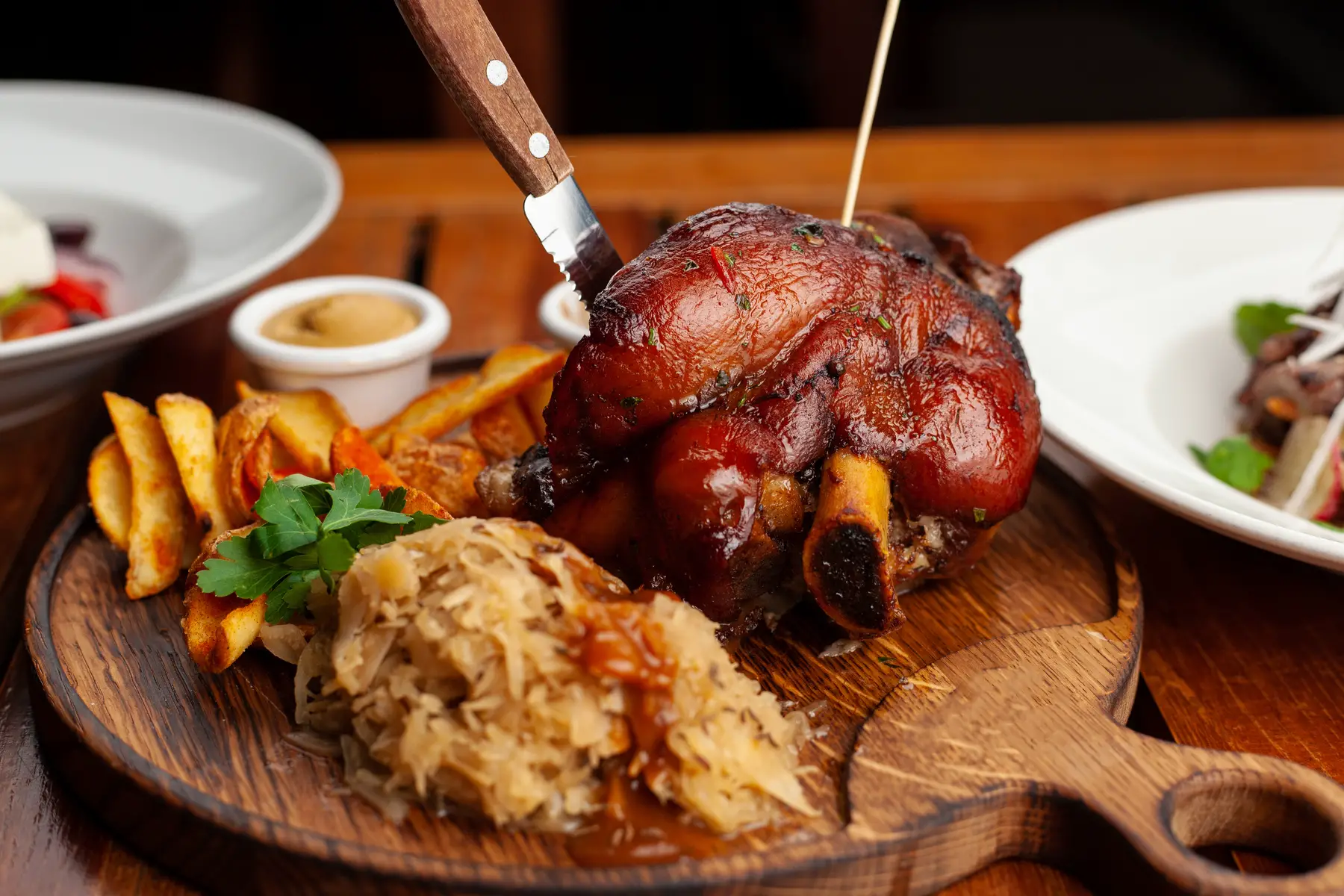Delve into the world of German cuisine, and you will soon discover an array of rich, hearty, and delicious dishes that are great comfort food as well. While each region of Germany has its own specialty dishes and traditional cuisine, there are certain culinary delights that people cherish throughout the country.
Because many of these are easy to make, you won’t find it too difficult to incorporate them into your weekly meal plan, either. So why not explore German culture with your tastebuds and create your own dishes using these handy recipes? Guten appetit!
Allianz Travel
If you’re planning to travel, make sure you’re covered for costs of cancellation and other interruptions with Allianz Travel. They offer a range of products, including travel insurance, incoming health insurance, and rental vehicle insurance. With 24/7 emergency contact available, Allianz Travel are there wherever you need them.
1. Wurst
Let’s start with an obvious one – Wurst. There are an estimated 1,500 varieties of sausage in Germany. These are prepared in many different ways and include a range of ingredients and unique spice blends. You will find these on street stalls almost everywhere across the country.
One of the most popular varieties is Bratwurst, a pan-fried or roasted sausage made from veal, beef, or pork. Others include Viennese Wiener (which is smoked and then boiled) and blood sausages, such as Blutwurst and Schwarzwurst.

You will also find regional specialties such as Berlin‘s Currywurst (with curried ketchup on top) and Bavaria’s Weisswurst, a white sausage that you peel before eating with sweet mustard.
Meanwhile, Nuremberg is famous for its grilled Rostbratwurst, which people eat with fermented shredded cabbage (sauerkraut). And in the state of Thuringian, the local Rostbratwurst is made using distinctive spices like marjoram and caraway.
Make your own Wurst
- Follow this simple recipe for Knackwurst with Sauerkraut
- Follow this Currywurst sauce recipe used by fast-food stalls
- Give Martha Stewart’s beer-braised Bratwurst with cabbage a whirl
2. Rouladen
This typical German dish consists of bacon, onions, mustard, and pickles wrapped in thinly sliced beef or veal, which is then cooked. Rouladen is also considered to be part of traditional Polish cuisine in the Upper Silesia region. Here it is known as rolada Śląska (Silesian roulade). It is also famous in Czechia where it is called Španělský ptáček (Spanish bird).
While the mixture varies from region to region, beef has become popular over the last century. The cut is usually topside beef or silverside since this is the cheaper cut. You will find this hearty German food at festivals and family dinner tables across the country. It usually comes with dumplings, mashed potatoes, Blaukraut (cooked red cabbage), and red wine gravy.

Make your own Rouladen
- Watch this video on how to make beef Rouladen
- Experiment with mushroom-stuffed pork Rouladen
3. Käsespätzle
Germany’s answer to pasta, Spätzle, is especially popular in the south of the country. These soft egg noodles are made from wheat flour and egg and are often topped with cheese (Käsespätzle) and roasted onions.
Although the origin of the dish is disputed and variations are found in neighboring countries, Spätzle remains a Swabian specialty. There, the general cooking rule is to use one more egg than the number of guests. It is often served with meat dishes that use a lot of sauce or gravy, such as Rouladen, or in stews, such as Gaisburger Marsch (a Swabian stew).
In some regions, the dough contains other ingredients like cherries (Kirschspätzle), apples (Apfelspätzle), liver (Leberspätzle), sauerkraut (Krautspätzle), or even beer.

Make your own Käsespätzle
- Follow this simple recipe with excellent reviews
- Check out this handy recipe with photos
- Watch this video and print a recipe for the kitchen
4. Eintopf
A steaming bowl of Eintopf will warm anyone up on a cold day. The name of this traditional German stew literally means ‘one pot’ and refers to the way of cooking rather than its contents. That said, most recipes contain the same basic ingredients: broth, vegetables, potatoes or pulses, and pork, beef, chicken, or fish.
Eintopf is similar to Irish stew, and you will find many different regional specialties throughout Germany. These include Lumpen und Flöh (which means ‘rags and fleas’) in the Kassel area and Linseneintopf (lentils) in Thüringen.
Full of flavor and heart-warming goodness, it’s no wonder this tasty dish is one of the most popular German foods.

Make your own Eintopf
- Follow this easy recipe with great reviews
- Try this recipe for Linseneintopf (lentil stew)
- Watch this video and learn how to make Eintopf
5. Sauerbraten
Germans love their meat dishes, and Sauerbraten (meaning ‘sour’ or ‘pickled’ roast) is one of the country’s national dishes. You can make a pot roast by using many different types of meat, which you marinate in wine, vinegar, spices, herbs, and then season for up to ten days. This recipe is also ideal for tenderizing cheap cuts of meat.
Schweinebraten (which translates as ‘roast pork’) is a delicious Bavarian recipe that you will commonly find in beer halls. It usually comes with braised cabbage or sauerkraut and dumplings (Knoedel) and goes down nicely with an ice-cold pilsner.
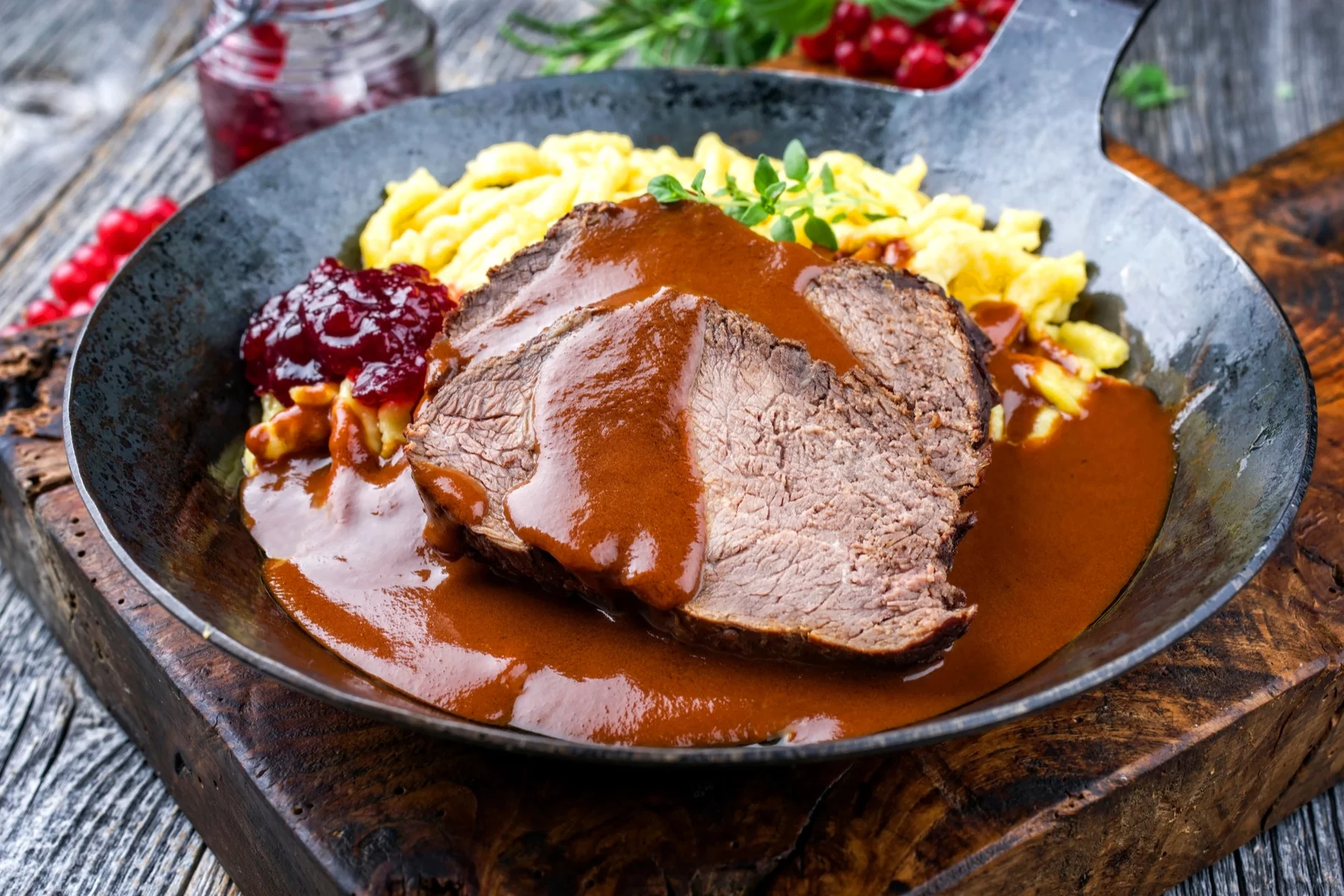
Make your own Sauerbraten
- Give this old family recipe a whirl
- Practice your German with this Rheinischer Sauerbraten recipe
- Check out this tasty crockpot recipe
6. Kartoffelpuffer
What a fantastic word! Perfect to enjoy as either a side dish or a light snack, Kartoffelpuffer are shallow pan-fried pancakes made from grated or ground potatoes mixed with flour, egg, onion, and seasoning. You can top them with a variety of sweet or savory condiments, such as sour cream, cottage cheese, apple sauce, or cinnamon.
You will often find this tasty German food at outdoor markets in the winter, and some variations use sweet potatoes, which are also popular.
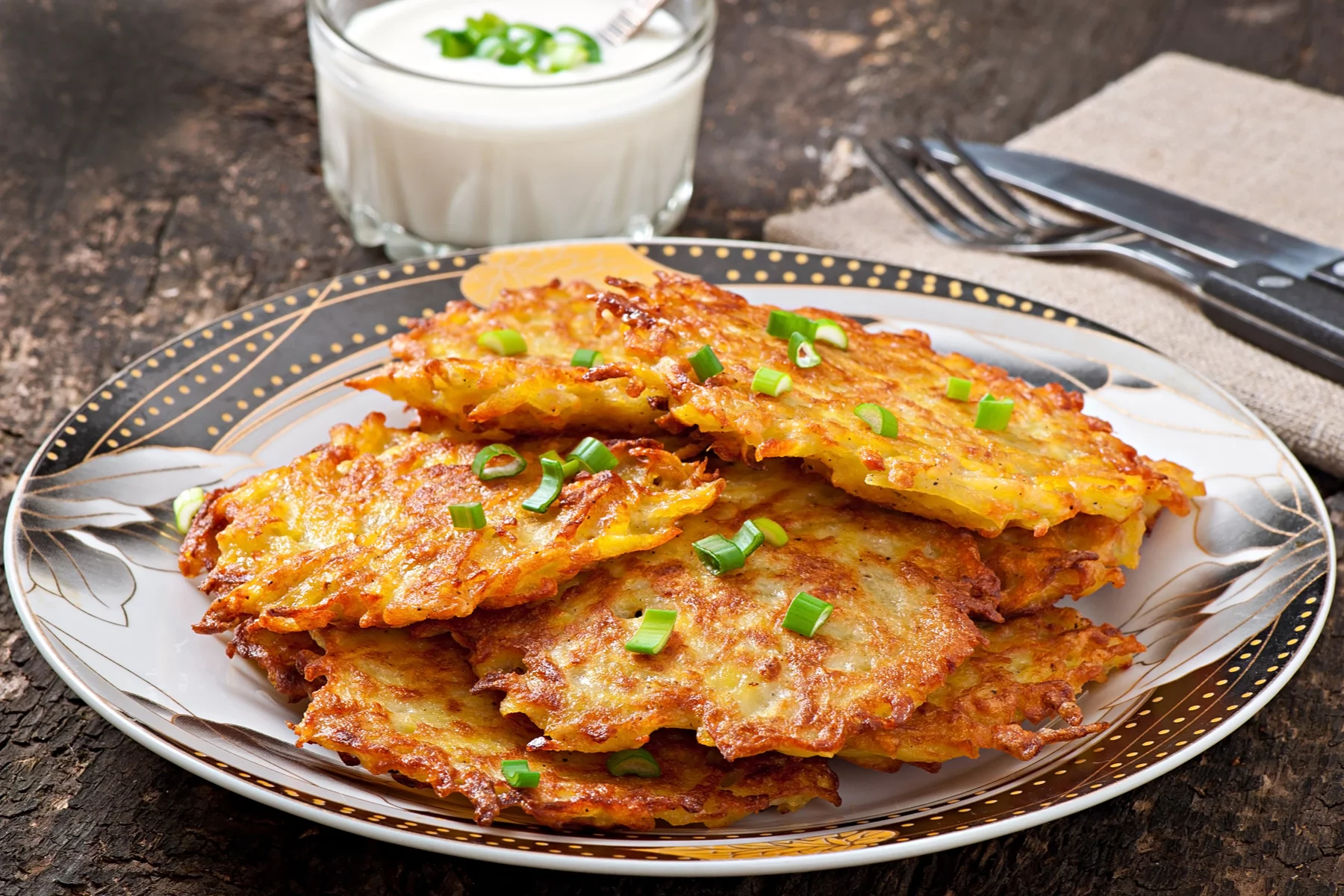
Make your own Kartoffelpuffer
- This step-by-step photo recipe for Kartoffelpuffer
- Print your own recipe for the kitchen
- Watch this mouth-watering video recipe
7. Brezel
Great to eat as a side dish or snack, the Brezel (pretzel) is a type of baked pastry that is made from dough commonly shaped into a knot. A Brezel is usually sprinkled with salt; however, other seasonings include cheese, sugar, chocolate, cinnamon, and different seeds.
This is a popular German food to eat with German beer, and you will find it in bakeries and on street stalls throughout the country. They usually come plain, sliced, and buttered (Butterbrezel) or with slices of cold meats or cheese. Lecker!

Make your own Brezel
- Try these German soft pretzels
- Check out this top-rated Brezen recipe (in German)
- Follow this video recipe to make Laugenbrezeln
8. Schnitzel
Our list of top German foods wouldn’t be complete without mentioning Schnitzels. Coated in breadcrumbs and often served with a slice of lemon, this thin, boneless cutlet of meat is an iconic part of German cuisine.
You can choose a Wiener Schnitzel (Viennese style) made from veal, or a Schnitzel Wiener Art, with pork (Schwein). If you order a Hamburg-style schnitzel, it will arrive with a fried egg on top, while a Holsten-style schnitzel comes with an egg, anchovies, and capers.
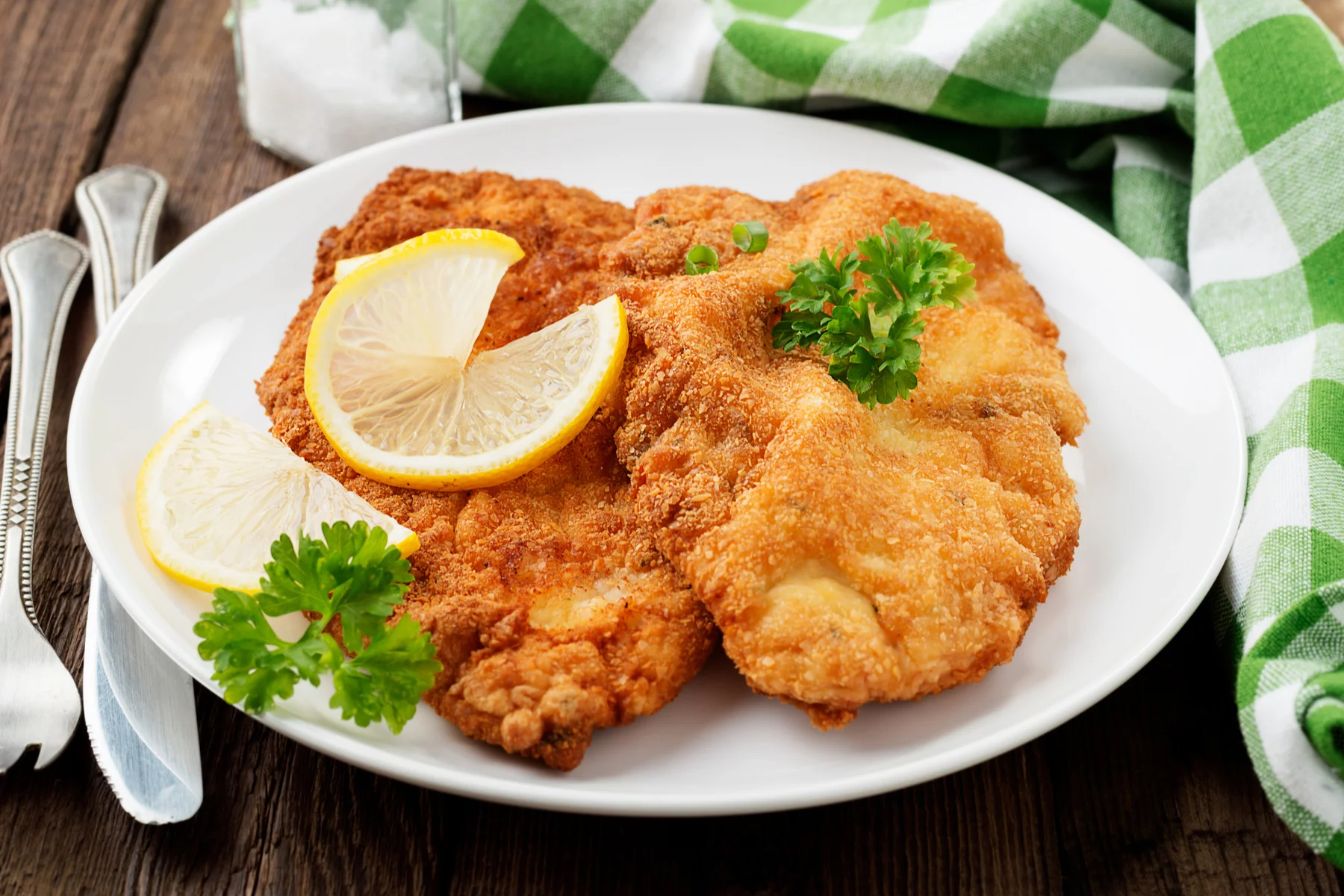
Make your own Schnitzel
- Prefer chicken over veal or pork? Try this recipe
- Print this authentic German recipe
- Check out this detailed recipe for the perfect Wiener Schnitzel
9. Schwarzwälder Kirschtorte
You’ll find lots of cakes and tarts to tempt you in Germany, but few people can resist a huge slice of Germany’s most famous cake: the delicious Schwarzwälder Kirschtorte (which literally means ‘Black Forest cherry torte’).
This dessert gets its name from Schwarzwälder Kirschwasser, a liqueur distilled from tart cherries. Interestingly, German law actually mandates that Kirschwasser must be present in the cake for it to be labeled a Schwarzwälder Kirschtorte.
Alternating layers of rich chocolate cake, cherries, and whipped cream are topped off with more cream, maraschino cherries, and chocolate shavings for a luxurious finish.
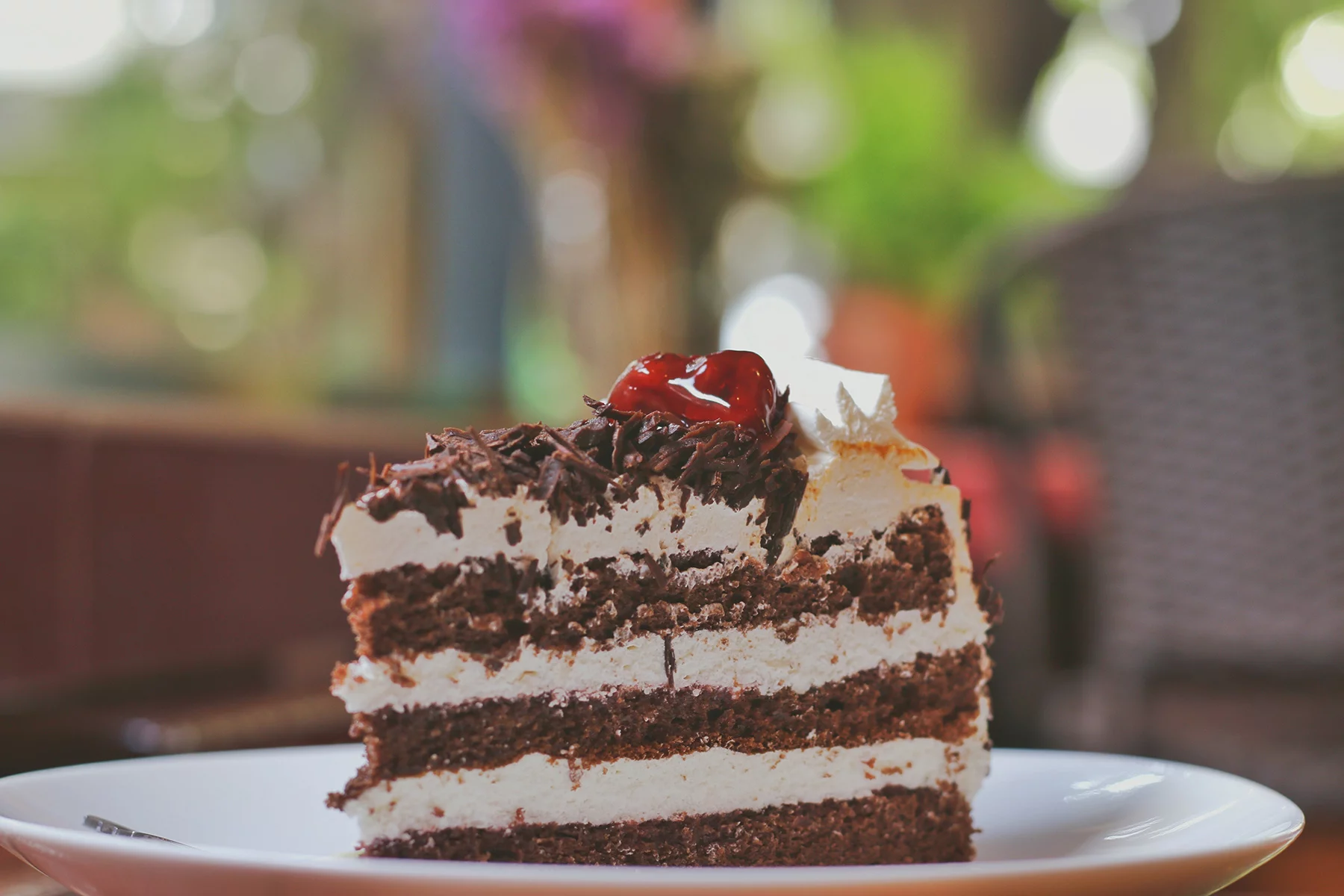
Make your own Schwarzwälder Kirschtorte
- Try this classic Black Forest gâteau recipe
- This recipe features extra cream for extra luxury!
- Make some adorable Black Forest cupcakes instead
10. Apfelstrudel
Although Apfelstrudel (apple strudel) is one of Austria’s national desserts, Germany has also adopted it into its local cuisine. The popular dish consists of a buttery pastry filled with apples that are flavored with sugar, cinnamon, and raisins. It was all the rage in the 18th century under the Habsburg Empire.
You can make the delicate, flaky pastry from an elastic dough, which you knead and stretch until it is almost paper-thin. You then butter the thin pastry layers together, before wrapping them around the apple filling and baking it.
It is common to eat the dessert in slices with a sprinkling of powdered or icing sugar. Simply heavenly!

Make your own Apfelstrudel
- Give this traditional recipe a go
- Cheat and use filo pastry – nobody will know!
- Follow this recipe for apple and pecan strudel with cinnamon


